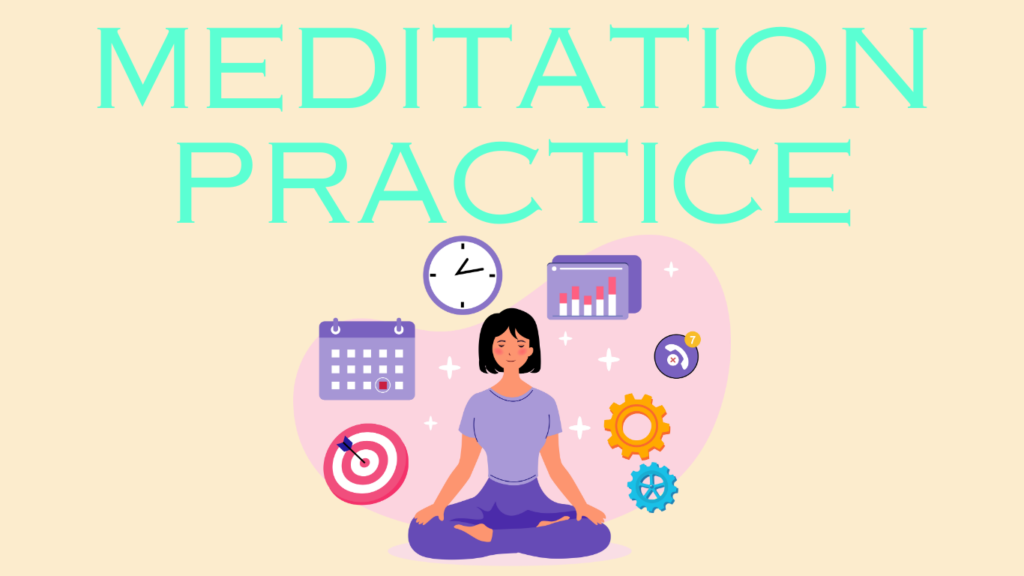11 Meditation Practice Ideas to Bring More Calm and Clarity Into Your Life

Let’s face it: life can get loud. Between deadlines, social feeds, and endless notifications, it’s easy to lose touch with what really matters — your peace of mind. That’s where meditation comes in. It’s not just sitting in silence (although it can be). Meditation is about learning how to come home to yourself, over and over again.
If you’ve been curious about where to begin — or are looking to expand your practice — here are 11 meditation ideas to help you breathe a little deeper, think a little clearer, and feel a little lighter.
Table of Contents
What are the best Meditation Practice Ideas?
Breath Awareness (Anapanasati)
Breath awareness is a mindfulness technique and one of the fundamental meditation techniques that involves paying attention to your breath, observing each inhale and exhale without trying to change it.
How it works: Focus all your attention on the breath — in through the nose, out through the nose. Why try it: It’s simple, grounding, and powerful. Even one mindful breath can reset your nervous system.
Benefits of Breath Awareness
The benefits of breath awareness are numerous and well-documented. Regular practice can lead to reduced stress and anxiety, improved emotional regulation, and enhanced cognitive function.
Breath awareness can also help individuals develop greater self-awareness, self-acceptance, and self-compassion. Additionally, it can improve sleep quality, boost mood, and increase feelings of calmness and relaxation.
How to Practice Breath Awareness
To practice breath awareness, find a comfortable and quiet space to sit or lie down. Close your eyes and bring your attention to your breath, feeling the sensation of the air entering and leaving your nostrils.
Focus on the sensation of each breath, observing its texture, temperature, and movement. When your mind wanders, gently bring your attention back to the breath without judgment. Start with short periods, such as 5-10 minutes, and gradually increase as you become more comfortable with the practice.
Integrating Breath Awareness into Daily Life
Breath awareness can be integrated into daily life in various ways. Take a few deep breaths before a meeting or a challenging task to calm your nerves and focus your attention.
Practice breath awareness during daily activities, such as eating or walking, to cultivate mindfulness and presence. You can also use breath awareness as a tool to manage stress and anxiety, taking a few deep breaths when feeling overwhelmed or frustrated.
Overcoming Challenges and Distractions
When practicing breath awareness, it’s common to encounter challenges and distractions. Your mind may wander, or you may feel uncomfortable or restless. To overcome these challenges, gently acknowledge the distraction and bring your attention back to the breath.
Avoid judgment or frustration, and instead, cultivate patience and kindness towards yourself. Remember, the goal of breath awareness is not to achieve a specific state but to cultivate awareness and acceptance of the present moment.
Body Scan Meditation
How it works: Move your awareness slowly through your body, part by part, noticing sensations or tension.
Why try it: Great for relaxing the body, relieving stress, and tuning into physical awareness. Additionally, regular practice of breath awareness can lead to better sleep by promoting relaxation and reducing stress.
Loving-Kindness (Metta) Meditation
How it works: Body scan meditation is a mindfulness practice that involves moving your awareness slowly through your body, part by part, noticing sensations or tension. Silently repeat phrases like “May I be happy, may I be safe,” then extend those wishes to others.
Why try it: Builds compassion, connection, and helps dissolve negative feelings toward self or others.
Walking Meditation
Loving-Kindness (Metta) Meditation
Loving kindness meditation, also known as Metta meditation, involves silently repeating phrases like “May I be happy, may I be safe,” then extending those wishes to others.
How it works: Walk slowly and deliberately, focusing on each step and your breathing. Why try it: Combines mindfulness with movement — perfect if sitting still feels like a challenge.
Mantra Meditation
How it works: Walking meditation is one of the mindfulness exercises that involves walking slowly and deliberately, focusing on each step and your breathing. Repeat a word or phrase (e.g., “Om,” “Peace,” or a personal intention) silently or out loud.
Why try it: The repetition anchors your attention and can shift your mental state quickly.
Visualization Meditation
How it works: Mantra meditation is one of the meditation techniques that involves repeating a word or phrase (e.g., “Om,” “Peace,” or a personal intention) silently or out loud. Imagine a peaceful scene, a source of light, or a positive goal coming to life in your mind.
Why try it: Harnesses the power of imagination to create emotional calm or motivation.
Sound Meditation
How it works: Use sound as your point of focus — whether it’s singing bowls, ambient music, or natural sounds. Why try it: Sound helps tune your awareness, soothe anxiety, and even alter brainwave states.
One of the advantages of visualization meditation is that it does not require any special equipment, making it accessible to anyone, anywhere.
Trataka (Candle Gazing)
How it works: Sound meditation is a focused practice that uses sound as your point of focus — whether it’s singing bowls, ambient music, or natural sounds. Gaze steadily at a candle flame without blinking, then close your eyes and visualize the flame.
Why try it: Boosts concentration and stimulates the third eye — great for those who are visually oriented.
Noting Practice
How it works: As thoughts or sensations arise, mentally note them (e.g., “thinking,” “itching,” “hearing”).
Why try it: Helps create space between you and your thoughts, reducing reactivity and deepening awareness.
Trataka (Candle Gazing): This meditation technique involves focusing on a candle flame to improve concentration and mental clarity. Ensure you are in a comfortable position before starting Trataka to maintain focus and avoid physical discomfort.
Chakra Meditation
How it works: Noting practice is one of the mindfulness techniques that involves mentally noting thoughts or sensations as they arise (e.g., “thinking,” “hearing”). Focus your attention on the body’s energy centers (chakras), often paired with visualization, breath, or mantra.
Why try it: Balances energy, supports emotional healing, and helps you feel more centered and aligned.
Journaling After Meditation
How it works: Spend a few minutes journaling right after meditation — write what you felt, thought, or learned. Why try it: Helps you integrate insights, notice patterns, and stay connected to your growth. Journaling after meditation can also be a valuable tool for mental health, helping individuals process their thoughts and emotions more effectively.
Conclusion
Final Thoughts:
There’s no “perfect” way to meditate — only what works for you. Start with just one of these ideas for a few minutes a day. Keep it simple. Let your practice evolve as you do.
Whether you’re seeking peace, clarity, healing, or focus, there’s a form of meditation that can help guide you there. All it takes is showing up — breath by breath.
What next? Pick one technique and try it today. Or rotate through the list over the next 11 days and see what resonates. Your inner calm is closer than you think.

